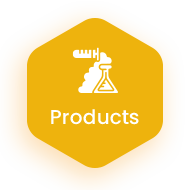Titanium Dioxide
Titanium Dioxide, a versatile and widely utilized compound, holds a prominent place in various industries. With its brilliant white pigment, it serves as a key component in paints, coatings, and plastics, enhancing their opacity and brightness. As a naturally occurring oxide of titanium, this compound exhibits exceptional light-scattering properties, making it an essential ingredient in sunscreen formulations for effective UV ray protection. Additionally, Titanium Dioxide finds application in the food industry as a food coloring agent and in the production of ceramics, paper, and textiles. Its inert nature and resistance to discoloration contribute to its popularity in a range of applications, from cosmetics to construction materials, where its unique properties elevate the performance and visual appeal of diverse products.

Functions and characteristics
1. High Performance Pigment: Titanium Dioxide serves as a high-performance pigment in plastic products, contributing to superior hiding power and achromatic properties. Its presence enhances the color quality, making it widely used in the production of cosmetics, ink, paper, coatings, rubber, and more.
2. Improved Material Properties: In plastic products, Titanium Dioxide not only provides excellent hiding power but also enhances heat resistance, light resistance, and weather resistance. This ensures that plastic products maintain their structural integrity and appearance, even when exposed to challenging environmental conditions.
3. UV Protection: The application of Titanium Dioxide in plastics acts as a protective barrier against harmful UV light. This UV resistance feature helps prevent degradation and discoloration of plastic products, ensuring their longevity and aesthetic appeal.
4. Mechanical Reinforcement in Rubber: In the rubber industry, Titanium Dioxide goes beyond its role as a colorant. It functions as a reinforcement agent, contributing to improved mechanical strength, anti-aging properties, and acting as a filler in rubber products.
5. Specifications Compliance: The provided specifications, including TiO2 content, oil phase brightness, achromatic force, and others, highlight the quality assurance of Titanium Dioxide. Meeting these indicators ensures consistent and reliable performance in various industrial applications.
6. Rutile Structure and Dispersion: With a high rutile content, Titanium Dioxide exhibits enhanced stability and dispersion in formulations. This characteristic contributes to the even distribution of the pigment in plastic and rubber products, ensuring uniform color and reinforcing properties.
7. Versatile Oil Dispersibility: Titanium Dioxide demonstrates versatile oil dispersibility, measured by the Hegeman number. This characteristic makes it easy to incorporate into various formulations, ensuring efficient blending and consistent performance in different applications.
| Item | Indicator |
| TiO2 content,%(m/m)≥ | 93 |
| Oil phase brightness≥ | 94 |
| achromatic force, Reynolds numberTCS≥ | 1850 |
| 105℃Volatiles,%(g/100g)≤ | 0.5 |
| Water soluble matter,%≤ | 0.5 |
| Water suspension PH value | 6.5~8.5 |
| Oil absorption capacity,%(m/m)≤ | 20 |
| Resistivity of water extraction solution, Ωm≥ | 80 |
| Sieve residue (45um sieve)%≤ | 0.02 |
| Rutile content, %≥ | 98.0 |
| Oil dispersibility, (Hegeman number)≥ | 1.80 |
Major Applications
Plastic industry
Titanium Dioxide is extensively employed in the plastic industry, enhancing the quality and performance of plastic products. Its high hiding power and achromatic properties improve the color quality of plastics, while simultaneously contributing to elevated heat resistance, light resistance, and weather resistance.

Rubber industry
In the rubber industry, Titanium Dioxide serves as more than just a colorant. It acts as a multifunctional additive, providing reinforcement to rubber products. This reinforcement results in improved mechanical strength, anti-aging properties, and acts as a filler, enhancing the overall performance and durability of rubber goods.

In Needs of Rubber Vulcanization Accelerators Solution?


